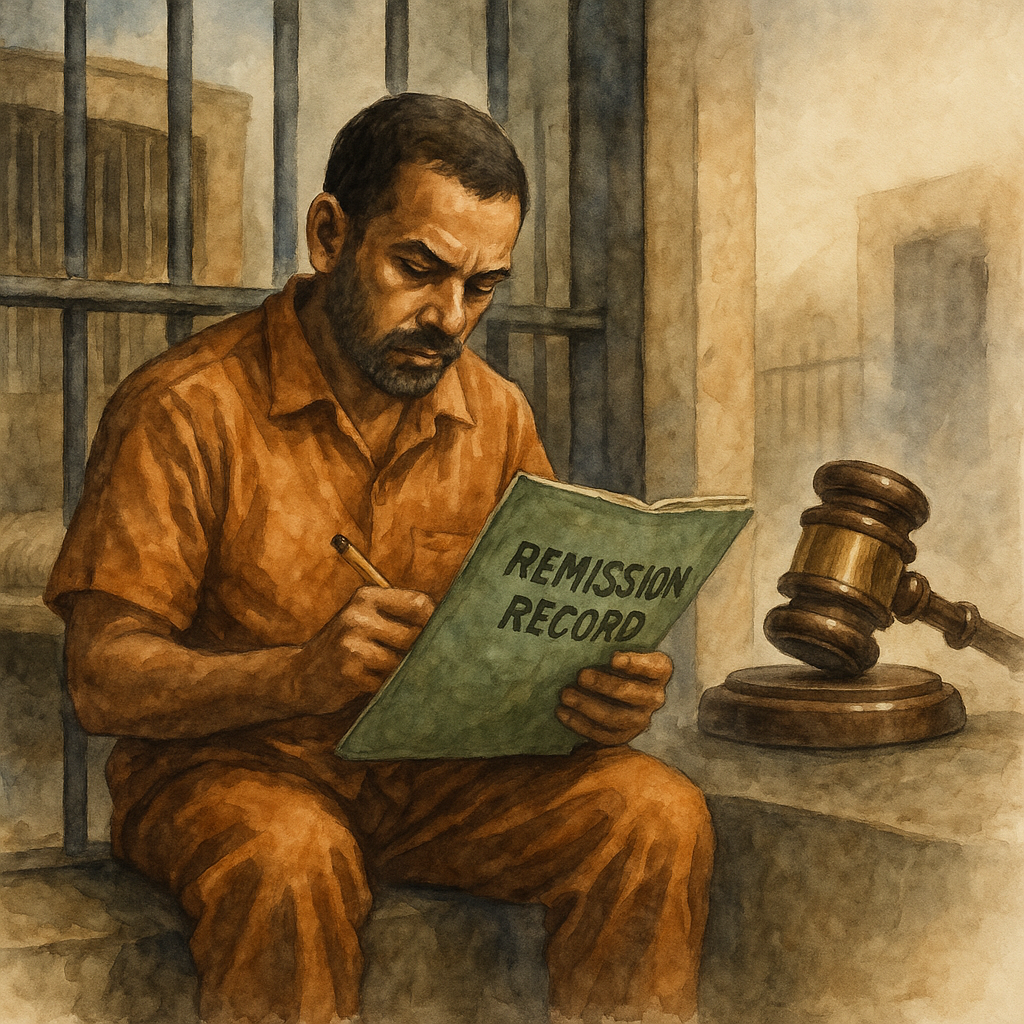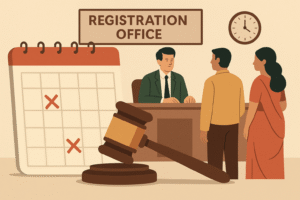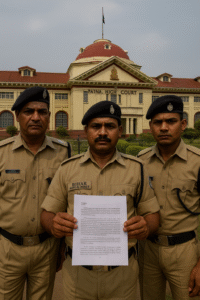The Patna High Court has clarified how remission records must be handled when considering the premature release of a life convict. In this criminal writ, the petitioner sought a direction for the authorities to consider the premature release of the petitioner’s father on the basis that he had completed 14 years of actual custody and 20 years with remission, as required by the policy applicable on the date of his conviction. The matter was heard by Hon’ble Mr. Justice Rajeev Ranjan Prasad and decided on 21 May 2021.
Simplified Explanation of the Judgment
This case concerns a life convict whose family claimed he had completed the custody period necessary to be considered for premature release. The petitioner argued that, under the remission policy applicable on the date of conviction, the convict became eligible once he had served 14 years in actual custody and 20 years with remission. The High Court noted these were the benchmarks invoked by the petitioner.
The background is important. The convict was tried in a 1994 police case from Gaya district and sentenced to life imprisonment by the Sessions Court. He successfully appealed to the High Court and was acquitted; however, the informant challenged this acquittal before the Supreme Court. The Supreme Court allowed the appeal, and the convict later surrendered on 29 August 2011 to serve the remaining sentence. He then moved the Prison authorities and the State Remission Board for premature release. An earlier writ in 2019 was disposed of as premature because he had not yet completed the policy-mandated period.
When the present writ was filed, the State’s stand was that the proposal could not be sent to the Remission Board because, as on 15 March 2021, the convict had completed 15 years 4 months and 20 days of actual custody and 19 years 3 months and 11 days with remission—so the 20-year threshold with remission was still short. State counsel also stated the 20-year mark with remission would be reached on 04 December 2021, which would be the expected release date.
The petitioner countered that the remission figures were understated because the years between the first conviction (21 December 1997) and his release following acquittal (19 August 2000) were not counted toward remission. If those years were counted, the petitioner calculated an additional 353 days of remission, which would complete the required 20 years with remission.
The State filed a supplementary counter affidavit explaining that the remission card for that period was not available because, under Rule 740(8) of the Bihar Prison Manual, 1927, remission cards of “released prisoners” are preserved for only one year after release; thus, the card had been destroyed.
The Court’s consideration focused on whether non-availability (or destruction) of the remission card was a valid reason to deny the convict the benefit of remission for the 1997–2000 period he spent in custody after conviction and before acquittal. The Court held several important points:
- Under the 1927 Prison Manual, remission is available in ordinary, special, and State-government categories, and the convict’s eligibility to earn remission was not disputed by the State for the relevant period (21.12.1997 to 19.08.2000).
- Rule 740 (and its sub-rules) governs how remission is recorded and preserved. Sub-rule (3) speaks of entering the date of release in the last year of imprisonment after deducting remission actually earned, and sub-rule (8) says remission cards of released prisoners shall be preserved for one year after release.
- In this case, the convict’s release in August 2000 was not a remission-based release but a release due to acquittal in appeal. Therefore, the jail authorities had no occasion to calculate a remission-based release date at that time. Given that the State knew a Supreme Court appeal by the informant was pending, destroying remission records (or failing to preserve the remission data in other official registers) was improper.
- The State produced no document proving lawful destruction of the remission card. The Court termed the State’s stand “vague” and emphasised that rules must facilitate justice, not defeat a prisoner’s rightful claim, particularly in matters implicating Article 21.
Accordingly, the Court rejected the State’s plea based on Rule 740(8), directed the authorities to compute remission for the missing period (21.12.1997 to 19.08.2000), and to consider the petitioner’s calculation of 353 days while doing the exercise. It ordered completion of this computation within four weeks, directed grant of special remission of the I.G., Prison for 2019 and 2020 within three weeks (as already stated by the State), and required disposal of the petitioner’s representation with a reasoned order within six weeks. If the convict was found entitled, he was to be released forthwith.
In essence, the High Court ensured that remission is computed fairly and that administrative lapses like missing remission cards cannot deprive a prisoner of lawful benefits.
Significance or Implication of the Judgment (For general public or government)
For the public, this ruling reinforces that the right to fair consideration of remission is part of the broader guarantee of personal liberty under Article 21. Loss or destruction of prison records cannot become a reason to deny remission that was actually earned during custody. The Court’s directions compel the State to reconstruct or compute remission from available pleadings, records, and other sources, so that eligible prisoners are not disadvantaged by administrative negligence.
For the government and prison administration, the decision is a reminder to maintain remission documentation responsibly, especially when related criminal proceedings are pending before higher courts. The Court’s reading of Rule 740 shows that a technical rule about preserving remission cards for one year cannot be used to defeat substantive rights when release was by acquittal rather than by remission, and when appeals were pending. It also underscores the duty to process special remission (e.g., I.G., Prison’s special remission) promptly, with delays potentially causing injustice.
Legal Issue(s) Decided and the Court’s Decision with reasoning
- Whether non-availability/destruction of the remission card can justify refusing to count remission earned between 21.12.1997 and 19.08.2000 for premature release.
Decision: No. The Court held that the State’s reliance on Rule 740(8) was unjust and unfair. Since the convict’s 2000 release followed acquittal, not remission, and an appeal was pending before the Supreme Court, the authorities ought to have preserved or otherwise recorded the remission earned. The State produced no proof of lawful destruction. The Court directed the authorities to compute remission for the missing period and consider the petitioner’s 353-day calculation. - Whether the State must process special remission for 2019 and 2020 as stated.
Decision: Yes. The Court directed that these special remissions be granted within three weeks, noting delays cause injustice. - Timelines and consequential directions.
Decision: The Court ordered computation of remission within four weeks, disposal of the representation with a reasoned order within six weeks, and immediate release if entitled.
Judgments Referred by Parties (with citations)
- State of Haryana v. Jagdish, relied upon by the petitioner to argue that the remission policy applicable is the one in force on the date of conviction (2010) 4 SCC (as cited in the petition).
Judgments Relied Upon or Cited by Court (with citations)
- None specifically cited by the Court in the text of the order; the Court primarily interpreted Rule 740 of the Bihar Prison Manual, 1927 and Article 21 principles.
Case Title
Petitioner v. State of Bihar & Ors.
Case Number
Criminal Writ Jurisdiction Case No. 289 of 2020.
Citation(s)
2021(2) PLJR 688
Coram and Names of Judges
Hon’ble Mr. Justice Rajeev Ranjan Prasad.
Names of Advocates and who they appeared for
- For the petitioner: Mr. Manish Kumar No. 2, Advocate.
- For the respondents (State): Mr. Saroj Kumar Sharma, AC to AAG-3.
Link to Judgment
MTYjMjg5IzIwMjAjMSNO-g4XqUv25KBM=
If you found this explanation helpful and wish to stay informed about how legal developments may affect your rights in Bihar, you may consider following Samvida Law Associates for more updates.
\








